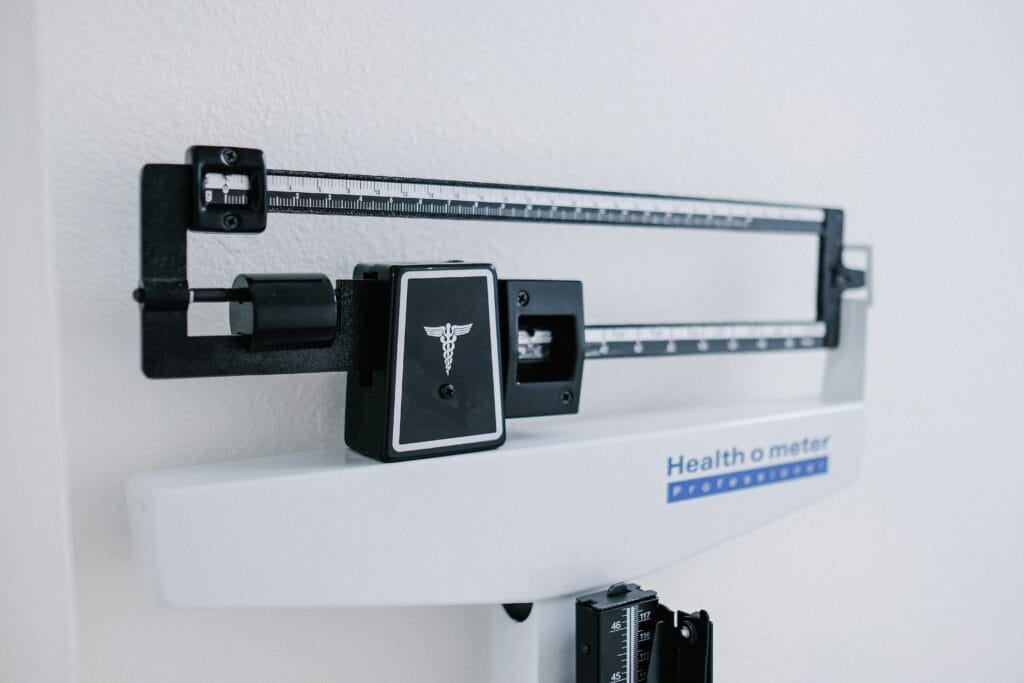*In collaboration with Simple Online Pharmacy*
When people talk about weight loss, the emphasis is often on the number on the scale, but this can be misleading. What really matters is body composition—losing fat and gaining muscle. This shift in perspective not only transforms how you look but significantly improves your health. While weight is just a number, how your body is composed is a much better indicator of overall health. Read on for more information on healthy fat loss.

Weight Loss vs. Fat Loss
Traditional weight loss goals often focus on a single number, without considering the actual makeup of that weight. Weight loss can occur through muscle loss, water loss, or fat loss. While the numbers might go down, this doesn’t always mean you’re healthier. In fact, losing muscle mass can slow down your metabolism, making it harder to maintain weight loss over time.
Fat loss, on the other hand, is what contributes to better health outcomes. Fat is stored in our body for energy, but excess fat—especially visceral fat, which surrounds the organs—can lead to health problems like heart disease, diabetes, and certain cancers. Reducing body fat while maintaining or increasing muscle mass results in a healthier body composition.
Health Benefits of Fat Loss
Fat loss, rather than simple weight loss, is where the real health benefits lie. According to Simple Online Pharmacy, reducing fat has numerous positive effects on physical and mental health. Here are some key benefits of healthy fat loss:
- Lower Risk of Chronic Diseases
Reducing body fat, especially around the abdomen, lowers the risk of developing conditions like type 2 diabetes, heart disease, and high blood pressure. Visceral fat is metabolically active and releases harmful substances into the body, increasing inflammation and the risk of these diseases. - Improved Mobility and Physical Function
As fat loss occurs, you will notice improvements in mobility and physical function. Excess fat can weigh down joints and muscles, making movement more difficult and contributing to joint pain, particularly in the knees and hips. Shedding fat while gaining muscle helps your body move more efficiently, improving overall mobility and reducing the risk of injury. - Increased Muscle Mass
Building muscle alongside fat loss ensures your metabolism remains strong. Muscle burns more calories at rest than fat, meaning the more muscle you have, the easier it is to maintain a healthy weight. Strength training exercises are vital in this process, helping to sculpt the body and improve endurance. - Mental Health Improvements
According to a Simple Online Pharmacy article, losing fat can also have a positive effect on your mental health. Regular exercise and improved body composition can reduce anxiety, improve mood, and boost self-esteem. This is because physical activity releases endorphins, the body’s natural mood elevators. - Better Sleep and Energy Levels
Fat loss contributes to improved sleep quality, which in turn boosts energy levels throughout the day. Excess body fat can contribute to conditions like sleep apnoea, which disrupts sleep patterns. As fat is reduced, sleep quality improves, making you feel more rested and alert.
Why the Scale Isn’t Everything

The scale can be deceiving because it doesn’t differentiate between fat and muscle. You might see fluctuations in your weight due to water retention, muscle gain, or hormonal changes, but that doesn’t mean you’re not making progress. For example, gaining muscle while losing fat might not result in a lower number on the scale, but it significantly improves your health and how you feel.
Instead of focusing solely on the number on the scale, it’s essential to track other indicators of progress. These can include:
- Body measurements: Keep track of your waist, hips, arms, and legs to see changes in your body shape.
- How your clothes fit: As you lose fat and gain muscle, your clothes will fit differently, even if the scale doesn’t show much change.
- Strength and endurance improvements: As you build muscle, you’ll notice improvements in your strength and ability to perform everyday tasks or exercises.
- Energy levels and mood: These are important indicators of improved health that often get overlooked in favour of the scale.
How to Focus on Fat Loss and Muscle Gain
If you want to focus on fat loss while building muscle, you need a combination of the right diet and exercise.
- Strength Training
Incorporating strength training into your routine is essential for building muscle. Exercises like squats, deadlifts, lunges, and weightlifting target various muscle groups and promote muscle growth while burning fat. - Cardiovascular Exercise
Cardio workouts, like running, cycling, or swimming, help burn calories and improve heart health. High-intensity interval training (HIIT) is a particularly effective method for burning fat in a short amount of time while preserving muscle mass. - Balanced Diet
Protein is vital for muscle repair and growth, so ensure you’re eating enough lean protein sources, such as chicken, fish, tofu, or beans. A diet rich in whole foods, such as vegetables, fruits, and whole grains, will also fuel your body with the nutrients it needs to support fat loss and muscle gain. - Rest and Recovery
Muscle growth happens during rest periods, so make sure you’re giving your body time to recover. Adequate sleep and rest days are crucial to ensuring your muscles repair and strengthen after workouts.

Final Thoughts
The next time you step on the scale, remember that the number doesn’t tell the whole story. Focusing on losing fat and gaining muscle, rather than just losing weight, will give you better health outcomes in the long run. With the right combination of strength training, cardio, and a balanced diet, you can achieve a healthier body composition that goes beyond the scale.
By shifting your mindset from “losing weight” to “gaining health,” you’ll not only feel better but also set yourself up for long-term success.

